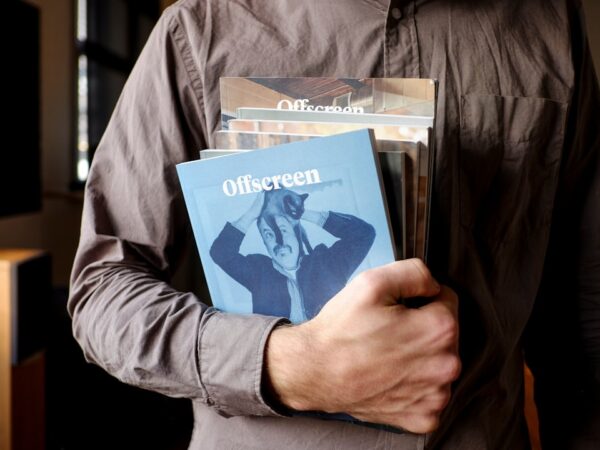
The Book to Screen Success: Best Movie Adaptations
Book to screen adaptations refer to the process of transforming a written work, such as a novel or a non-fiction book, into a visual medium, such as a film or a television series. This process involves translating the story, characters, and themes from the source material onto the screen, while also making necessary changes to fit the constraints and demands of the film medium. Book to screen adaptations have a long history, dating back to the early days of cinema, and have become increasingly popular in recent years.
The concept of adapting books for the screen has been around since the early days of cinema. In fact, one of the first films ever made, “A Trip to the Moon” (1902), was based on Jules Verne’s novel “From the Earth to the Moon.” Since then, countless books have been adapted into films and television shows, ranging from classics like “Gone with the Wind” (1939) and “To Kill a Mockingbird” (1962) to contemporary bestsellers like “The Hunger Games” (2012) and “Harry Potter” (2001-2011) series.
In recent years, book to screen adaptations have seen a surge in popularity. This can be attributed to several factors. Firstly, there is a built-in audience for these adaptations, as fans of the books are often eager to see their favorite stories come to life on the screen. This pre-existing fan base can help generate buzz and drive box office success. Additionally, advancements in technology have made it easier and more cost-effective to bring fantastical worlds and complex narratives from the page to the screen. As a result, studios and streaming services are increasingly turning to books as a source of inspiration for their content.
Key Takeaways
- Book to screen adaptations require careful consideration of the source material
- Choosing the right book is crucial for a successful adaptation
- Adapting a book for the screen requires a delicate balance of staying true to the source material while making necessary changes
- The screenwriter plays a crucial role in bringing a book to life on screen
- Casting can make or break a book to screen adaptation
The Importance of Choosing the Right Book for Adaptation
Choosing the right book for adaptation is crucial in determining the success of a book to screen adaptation. There are several criteria that filmmakers consider when selecting a book to adapt. Firstly, the book should have a compelling story and well-developed characters that will translate well onto the screen. It should also have a strong narrative structure that can be condensed or expanded to fit the runtime of a film or television series. Additionally, the book should have a built-in audience or a potential for broad appeal to ensure commercial success.
There have been numerous examples of successful and unsuccessful book to screen adaptations over the years. One example of a successful adaptation is “The Lord of the Rings” trilogy (2001-2003), which brought J.R.R. Tolkien’s epic fantasy novels to life on the big screen. The films were critically acclaimed and commercially successful, capturing the essence of the books while also making necessary changes for the medium of film.
On the other hand, there have been instances where adaptations have failed to capture the essence of the source material or connect with audiences. One example is the film adaptation of “The Golden Compass” (2007), based on Philip Pullman’s popular fantasy novel. The film received mixed reviews and underperformed at the box office, leading to the cancellation of planned sequels.
The impact of the source material on the success of an adaptation cannot be overstated. A well-written and beloved book can provide a strong foundation for a successful adaptation, as it already has a dedicated fan base and a compelling story. However, it also presents challenges, as fans have high expectations and are often critical of any changes made in the adaptation process. Striking a balance between fidelity to the source material and creative freedom is key in creating a successful book to screen adaptation.
The Art of Adapting a Book for the Screen
Adapting a book for the screen is a complex process that requires careful consideration of the differences between books and films. While both mediums tell stories, they do so in different ways and have different strengths and limitations. Books allow for more internal exploration of characters’ thoughts and emotions, while films excel at visual storytelling and creating immersive worlds.
One of the key techniques for adapting a book for the screen is condensing or expanding the narrative to fit the runtime of a film or television series. Books often have more room for subplots and secondary characters, which may need to be streamlined or cut entirely in the adaptation process. Conversely, a film or television series may need to expand on certain aspects of the story or characters to provide a more complete and satisfying viewing experience.
Another important technique is visual storytelling. Books rely on words to describe settings, characters, and actions, while films can show these elements directly through visuals. This requires careful consideration of how to translate the author’s descriptions onto the screen, as well as finding creative ways to convey information that may be difficult to show visually.
Balancing fidelity to the source material with the needs of the film medium is a delicate task. While it is important to stay true to the essence of the book, filmmakers also need to make changes to ensure that the story works on screen. This may involve condensing or rearranging certain events, combining or eliminating characters, or altering the ending for dramatic effect. The key is to maintain the spirit of the book while also creating a compelling cinematic experience.
The Role of a Screenwriter in Book to Screen Adaptations
| Metrics | Description |
|---|---|
| Script Development | The process of adapting a book into a screenplay involves developing the script to ensure that it captures the essence of the book while also making it suitable for the screen. |
| Characterization | The screenwriter must ensure that the characters in the book are well-developed and translated onto the screen in a way that is true to the book. |
| Plot Adaptation | The screenwriter must adapt the plot of the book to fit the constraints of a screenplay, while still maintaining the integrity of the story. |
| Dialogue | The screenwriter must create dialogue that is true to the book, while also making it suitable for the screen. |
| Collaboration | The screenwriter must work closely with the director, producers, and other members of the production team to ensure that the screenplay is suitable for the screen. |
| Marketability | The screenwriter must ensure that the screenplay is marketable and has the potential to attract audiences, while still maintaining the integrity of the book. |
The role of a screenwriter in book to screen adaptations is crucial in translating the source material onto the screen. The screenwriter is responsible for adapting the story, characters, and themes from the book into a screenplay that can be filmed. This involves condensing or expanding the narrative, making necessary changes for the medium of film, and finding creative solutions to adapt elements that may not work on screen.
Collaboration with the author of the source material is an important aspect of the adaptation process. The screenwriter and the author need to work together to ensure that the adaptation stays true to the essence of the book while also making necessary changes for the medium of film. This collaboration can help provide insights into the author’s intentions and help maintain the integrity of the source material.
Adapting a book with multiple perspectives or a non-linear structure can present unique challenges for a screenwriter. In these cases, the screenwriter needs to find creative ways to convey the different perspectives or structure of the book on screen. This may involve using voiceover narration, flashbacks, or other narrative devices to capture the essence of the book while also creating a cohesive and engaging cinematic experience.
The Impact of Casting on Book to Screen Adaptations
Casting is a crucial aspect of book to screen adaptations, as it can greatly influence how audiences perceive and connect with the characters from the source material. The right casting choice can bring a character to life and capture their essence, while a miscast actor can detract from the overall experience.
One example of successful casting in a book to screen adaptation is Daniel Radcliffe as Harry Potter in the “Harry Potter” film series. Radcliffe’s portrayal of the iconic character was widely praised and helped solidify his place in pop culture. His performance captured the essence of Harry Potter and brought him to life in a way that resonated with fans of the books.
On the other hand, there have been instances where casting choices have been met with criticism or disappointment. One example is the casting of Ben Affleck as Batman in “Batman v Superman: Dawn of Justice” (2016). Many fans were skeptical of Affleck’s ability to portray the iconic superhero, and his performance received mixed reviews.
Balancing the expectations of fans with the needs of the film is a challenge in book to screen adaptations. Fans often have preconceived notions about how characters should look and behave, and any deviation from these expectations can be met with backlash. However, filmmakers also need to consider the needs of the film and cast actors who can bring the characters to life in a way that works on screen.
The Use of Visual Effects in Book to Screen Adaptations

Visual effects play a significant role in bringing the fantastical worlds and creatures from books to life on the screen. They can enhance the storytelling, create immersive environments, and bring characters and creatures to life in a way that would not be possible with practical effects alone.
One example of successful use of visual effects in a book to screen adaptation is “The Lord of the Rings” trilogy. The films used a combination of practical effects, such as prosthetics and miniatures, and CGI to create the vast landscapes of Middle-earth, the epic battles, and the fantastical creatures. The visual effects were seamless and helped transport audiences into the world of the books.
However, there have also been instances where the use of visual effects has been criticized for being excessive or unrealistic. One example is the film adaptation of “Eragon” (2006), which relied heavily on CGI for its dragon characters. The visual effects were met with criticism for looking artificial and detracting from the overall experience.
Balancing the use of practical effects with CGI is important in creating a believable and immersive world. Practical effects can provide a tangible quality to the visuals, while CGI can enhance and expand on what is possible with practical effects alone. The key is to use visual effects in a way that serves the story and enhances the overall experience, rather than being a distraction.
The Significance of Music in Book to Screen Adaptations
Music plays a significant role in book to screen adaptations, as it can enhance the storytelling, evoke emotions, and create a sense of atmosphere. It can help establish the tone of a scene or highlight important moments in the story.
One example of successful use of music in a book to screen adaptation is the “Harry Potter” film series. The films used a score composed by John Williams, which became iconic and synonymous with the world of Harry Potter. The music helped transport audiences into the magical world of the books and added an extra layer of emotion and excitement to the storytelling.
However, there have also been instances where the use of music has been criticized for being intrusive or mismatched with the tone of the story. One example is the film adaptation of “The Great Gatsby” (2013), which used contemporary music in a story set in the 1920s. The use of modern music was met with mixed reviews, with some critics feeling that it detracted from the authenticity of the period.
Balancing the use of original music with pre-existing songs is important in creating a cohesive and immersive experience. Original music can help establish a unique identity for the adaptation, while pre-existing songs can evoke a sense of nostalgia or enhance specific moments in the story. The key is to use music in a way that serves the story and enhances the overall experience, rather than being a distraction.
The Challenges of Adapting a Book Series for the Screen
Adapting a book series for the screen presents unique challenges, as filmmakers need to balance the needs of each individual film with the overarching story of the series. They need to condense or expand the narrative to fit each film while also maintaining continuity and satisfying fans of the books.
One example of successful adaptation of a book series is “The Hunger Games” film series. The films successfully condensed Suzanne Collins’ trilogy into four films, capturing the essence of the books while also making necessary changes for the medium of film. The films were critically acclaimed and commercially successful, satisfying both fans of the books and general audiences.
On the other hand, there have been instances where adaptations of book series have struggled to maintain the quality and consistency of the source material. One example is the film adaptation of “The Divergent” series, which was initially planned as a trilogy but was ultimately condensed into a single film due to declining box office performance. The condensed adaptation received mixed reviews and left fans of the books disappointed.
Balancing the needs of each individual film with the overarching story of the series is a challenge in adapting book series for the screen. Filmmakers need to make necessary changes to ensure that each film works as a standalone experience while also maintaining continuity and satisfying fans of the books. This may involve condensing or rearranging certain events, combining or eliminating characters, or altering the ending for dramatic effect.
The Success of Book to Screen Adaptations in Different Genres
Book to screen adaptations have been successful in a wide range of genres, from fantasy and science fiction to drama and romance. The success of an adaptation often depends on how well the source material translates onto the screen and how effectively it connects with audiences.
One example of a successful book to screen adaptation in the fantasy genre is “The Chronicles of Narnia” film series. The films brought C.S. Lewis’ beloved fantasy novels to life on the big screen, capturing the magic and wonder of the books while also making necessary changes for the medium of film. The films were commercially successful and helped introduce a new generation of fans to the world of Narnia.
In contrast, there have been instances where adaptations in certain genres have struggled to connect with audiences. One example is the film adaptation of “The Dark Tower” (2017), based on Stephen King’s popular fantasy series. The film received mixed reviews and underperformed at the box office, leading to the cancellation of planned sequels.
The impact of genre on the success of an adaptation cannot be overstated. Different genres have different expectations and conventions, and filmmakers need to understand and respect these when adapting a book for the screen. This may involve making changes to the story or characters to fit the genre or finding creative ways to capture the essence of the genre on screen.
The Future of Book to Screen Adaptations
The future of book to screen adaptations looks promising, as there is a wealth of source material waiting to be adapted and advancements in technology continue to make it easier and more cost-effective to bring these stories to life on the screen. Streaming services, in particular, have become major players in the book to screen adaptation game, as they have the resources and platform to take risks and adapt lesser-known or niche books.
The impact of streaming services on book to screen adaptations cannot be overstated. These platforms have given filmmakers more creative freedom and flexibility, as they are not bound by the constraints of traditional theatrical releases. They can take risks and adapt books that may not have been considered viable for a wide theatrical release, allowing for a wider range of stories and voices to be represented on screen.
Despite the challenges and complexities involved in adapting books for the screen, it is important to continue adapting books in the future. Books have a unique power to transport readers into different worlds, evoke emotions, and explore complex themes. By adapting books for the screen, filmmakers can bring these stories to a wider audience and create a shared cultural experience.
In conclusion, book to screen adaptations have a long history and have become increasingly popular in recent years. Choosing the right book for adaptation is crucial in determining the success of an adaptation, as it sets the foundation for the story, characters, and themes that will be brought to life on screen. A well-written and beloved book can generate a built-in audience and anticipation for the adaptation, while a poorly received or lesser-known book may struggle to attract viewers. Additionally, the skill and creativity of the filmmakers involved in the adaptation process play a significant role in capturing the essence of the book and translating it effectively to the screen. Successful adaptations often strike a balance between staying faithful to the source material and making necessary changes to suit the medium of film or television. Ultimately, a successful book to screen adaptation can bring new life to a beloved story and introduce it to a wider audience, while also offering a fresh perspective and interpretation that can enhance the original material.
FAQs
What is a movie made from a book?
A movie made from a book is a film adaptation of a literary work, such as a novel, memoir, or biography.
Why are books made into movies?
Books are made into movies because they offer a pre-existing story with built-in fan bases, which can help attract audiences and generate revenue. Additionally, movies can bring a new visual interpretation to the story and reach a wider audience.
What are some examples of movies made from books?
Some examples of movies made from books include “The Lord of the Rings,” “Harry Potter,” “The Hunger Games,” “The Fault in Our Stars,” “The Great Gatsby,” and “To Kill a Mockingbird.”
How closely do movies follow the books they are based on?
Movies based on books can vary in how closely they follow the original story. Some movies stay faithful to the book, while others make significant changes to the plot, characters, or setting.
What are some challenges of adapting a book into a movie?
Some challenges of adapting a book into a movie include condensing a lengthy story into a shorter format, capturing the essence of the characters and setting, and pleasing both fans of the book and general audiences. Additionally, some books may contain content that is difficult to translate to the screen.
Do movies based on books always do well at the box office?
Movies based on books do not always do well at the box office. While some adaptations are highly successful, others may struggle to attract audiences or receive negative reviews. The success of a movie based on a book depends on various factors, including the popularity of the book, the quality of the adaptation, and the timing of the release.


















